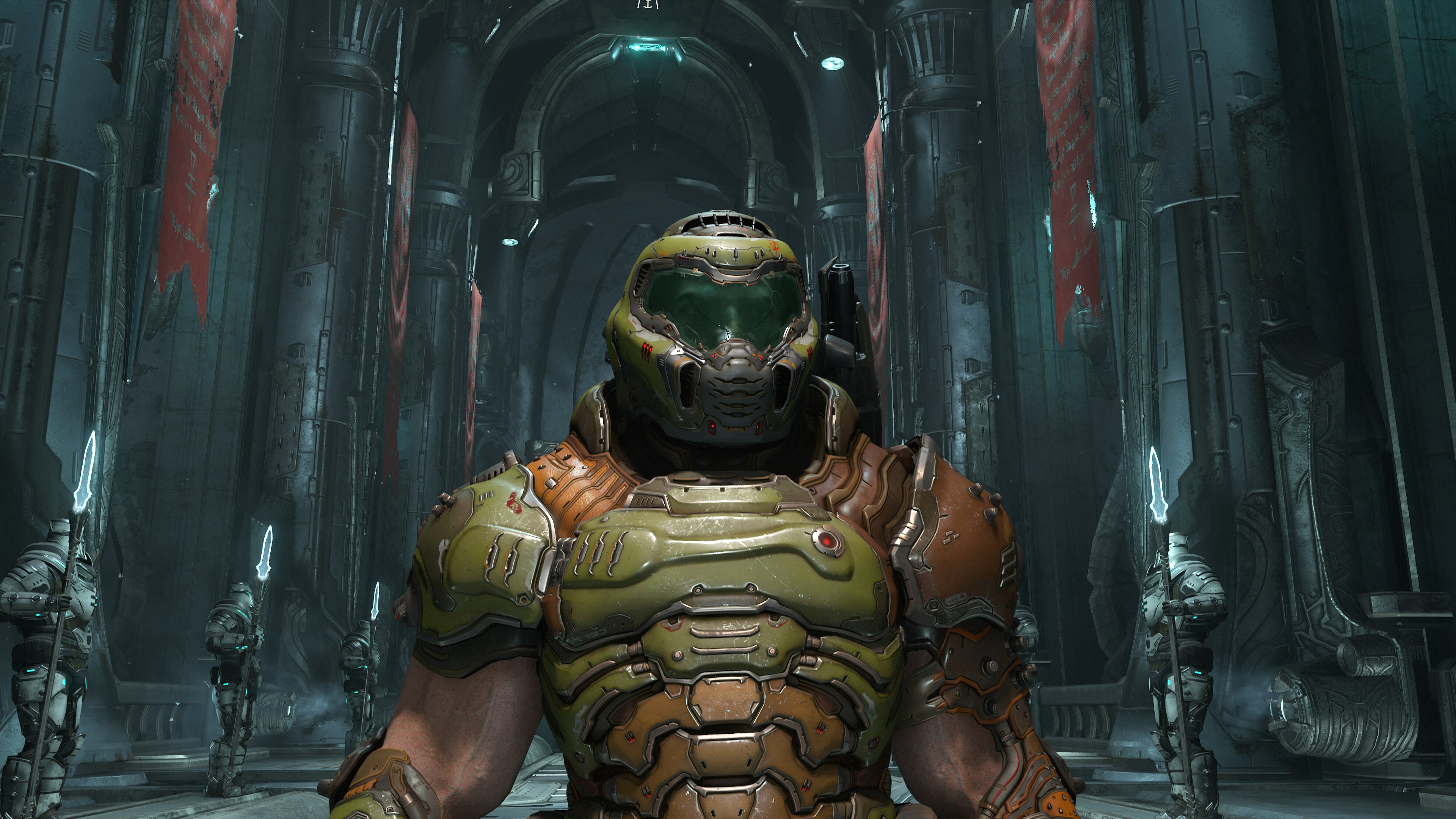
This article first appeared in PC Gamer magazine issue 391 in December 2023. Every month we run exclusive features exploring the world of PC gaming—from behind-the-scenes previews, to incredible community stories, to fascinating interviews, and more.
The history of Doom is more than just the tale of how John Romero and John Carmack came together to create a PC gaming phenomenon. The history of Doom is the history of id Software and the history of the FPS itself. From the 1993 original to 2020's Doom Eternal, each new Doom game developed by id Software has both reflected the culture of the studio at the time, and moved the needle of the FPS in some manner.
Doom
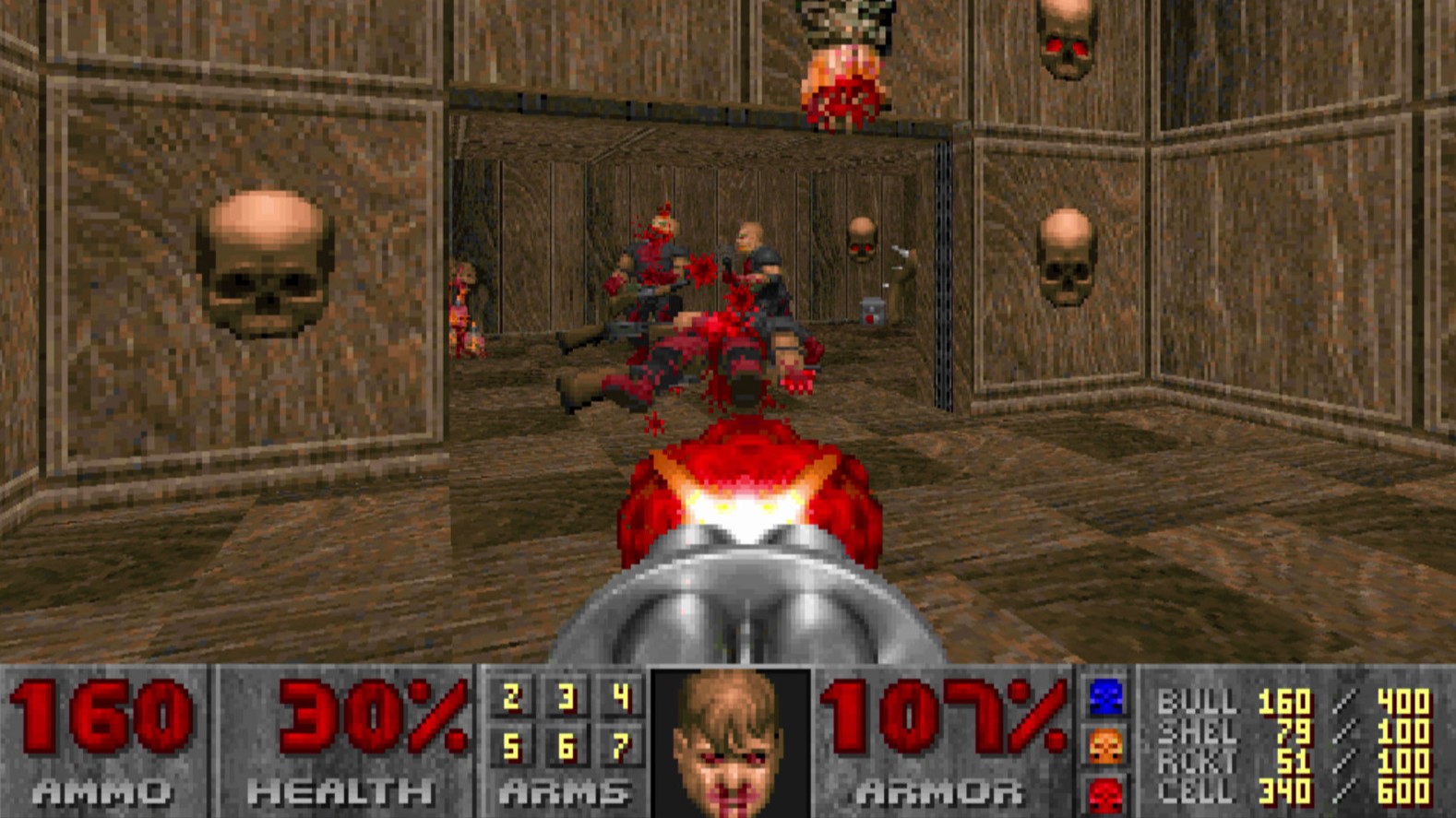
The development of 1993's Doom is one of the most well documented projects in the medium's history. After John Carmack discovered a way to mimic the side-scrolling effect of Super Mario Bros 3 on PC, Carmack worked with John Romero, alongside game designer Tom Hall, to create their own game, Commander Keen in Invasion of the Vortigauns.
After receiving their first royalty cheque from publisher Apogee, Romero and Carmack founded their own company with artist Adrian Carmack (no relation), while also hiring Hall. Through 1991 they made three more Commander Keen games, then released the first true FPS, Wolfenstein 3D, in 1992. After Wolfenstein's success, id began making a follow-up shooter, this time inspired by a D&D campaign the four founders had played together at weekends. Nineteen months after Wolfenstein, a legend was born.
Doom's origin story may be familiar, but there's one element of it that remains puzzling. Why is it Doom that is so revered today, and not Wolfenstein? Id's first shooter was the real trailblazer, and a major hit in its own right. Doom really just iterated on those ideas, a fact acknowledged by the game's original reviews. PC Zone's review, for example, summarises Doom's premise as "very simple, very Wolfenstein". Why do we worship the second true FPS ever made, and not the first? Clues to the answer can be found in those same reviews. Doom may have been built upon the same principles as Wolfenstein, but everything about it was so much more vivid and elevated. "The speed and smoothness of this texture-mapping system make Ultima Underworld, Shadowcaster, Terminator Rampage and Jurassic Park look like they're running in BASIC," writes Zone's reviewer David McCandless. Even Edge's review of Doom states that Wolfenstein's 3D levels look "primitive" compared to id's latest shooter. "There are stairs for you to climb, lifts to find and aliens firing at you from windows… go back and play Wolfenstein and you'll laugh at the 2Dness of the 3D perspective."
But perhaps the most significant difference between Wolfenstein and Doom had little to do with visuals. In January 1994, right after Doom's launch, Game Developer magazine published an article called 'Monsters from the Id' that points out how Doom's new engine allowed "all objects to have physical characteristics, such as weight, momentum and even sound. For example, bullets were actual physical projectiles in the Doom engine as opposed to Wolfenstein, where they were just calculations".
Deathless design
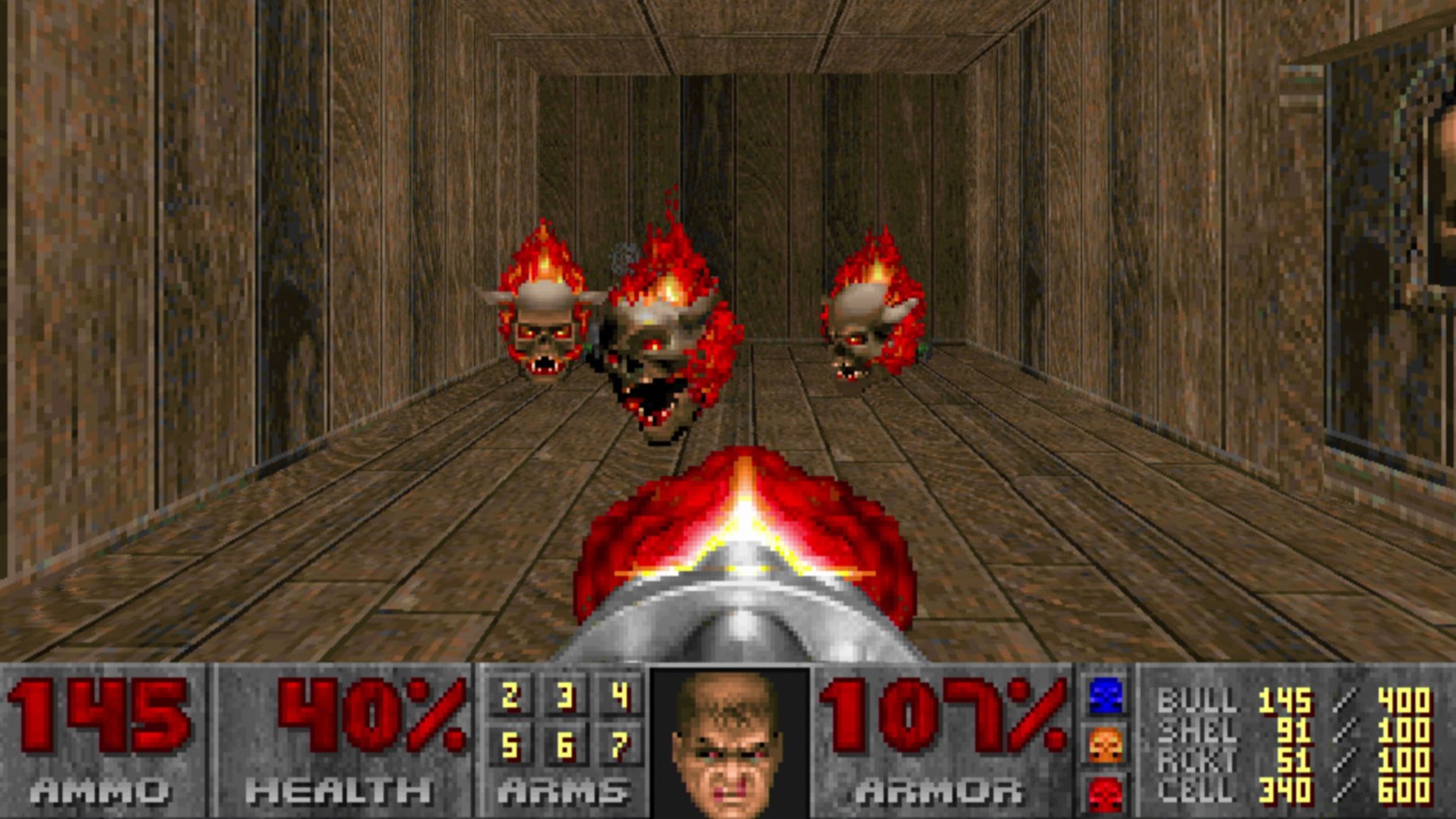
With Doom, id realised that a shooter doesn't just have to look good, it has to feel good as well. Add to that a far more striking setting and multiplayer capabilities, and it's clear that Wolfenstein pales in comparison.
Yet this doesn't explain why the same thing didn't happen to Doom when, for example, Quake launched. By now, Doom has been surpassed technologically countless times over, yet its reputation remains intact. Some of the reasons for this are the same that made Doom such a phenomenon in the first place. Its infernal sci-fi aesthetic is more vivid and distinctive than many shooters that would come after it. The game's deviously intricate levels have also stood the test of time, thanks to the design talents of Romero and Sandy Petersen. As described in David Kushner's Masters of Doom, "Romero had a knack for staging the battles, letting the player win one round, then pummelling him with a storm of enemies." Petersen's levels, were "cerebral and strategic".
Keep up to date with the most important stories and the best deals, as picked by the PC Gamer team.
Its infernal sci-fi aesthetic is more vivid and distinctive than many shooters that would come after it.
There are other reasons too, one of the main ones being its accessibility. Doom wasn't just visually cutting edge, it was hugely well optimised. As noted in Monsters from the Id, Doom's engine "has a medium detail mode" that "triples the speed of the game on slower machines". This, combined with its initial shareware release, made Doom a hugely accessible game. That accessibility has only grown over time, to the point where Doom will run on everything.
There's one final reason why Doom remains such an enduring phenomenon, and it's hinted at in Monsters from the Id. Wolfenstein's launch saw an unexpected "cottage industry of hackers" who "hacked map editors, bitmap editors and sometimes entire modified games". Although Wolfenstein's publisher Apogee believed these "mutations" hurt sales, id felt "that people have the right to make whatever use of the game that makes them happy".
Id Software's attitude toward other designers' use of its tech, culminating in the release of the game's source code in 1997, would prove to be the most important decision in sealing the legacy of the original game.
Doom 2
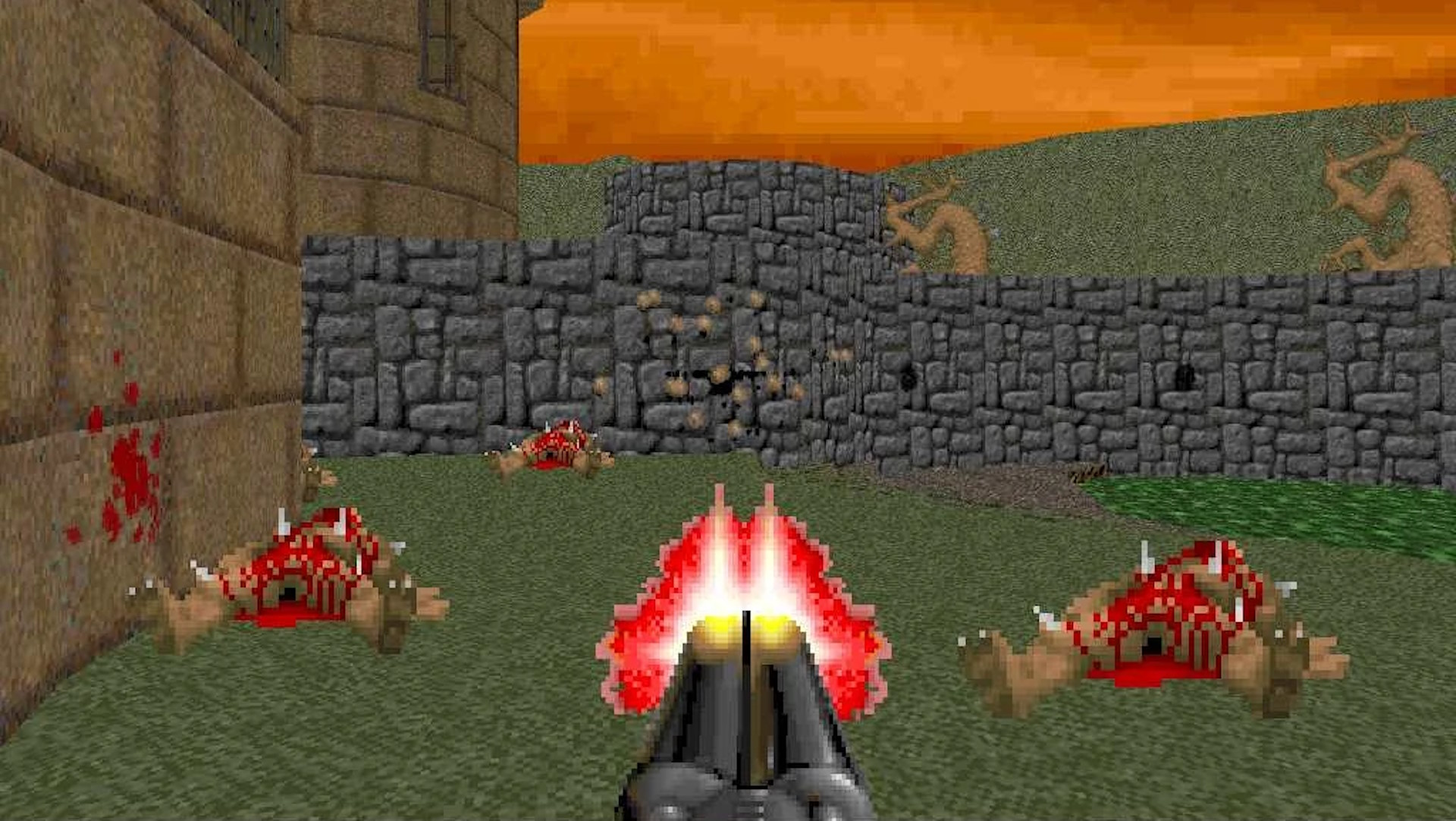
On the face of it, Doom 2: Hell on Earth is the least remarkable of the five mainline games. A straightforward follow-up built in the same engine, Doom 2 was designed to let id capitalise on the success of Doom while giving John Carmack the freedom to pursue new advances in graphics tech. In his autobiography, John Romero notes that, "During an early design meeting, we agreed that the formula for Doom was perfect and that the new game should just build on what we started without breaking the underlying game feel players loved."
While primarily an expansive level pack using most of the same features and assets, Doom 2 does add some features that would be important in the series' history going forward. Most significant of these is the double-barrelled super shotgun, which according to Romero was added specifically because it could share the same number on the keyboard as the shotgun. "We didn't want to tie a new weapon to 8, because the 7 key already controlled our most brutal weapon, the BFG". Although added out of convenience, the super shotgun quickly became one of the series' most iconic weapons. Alongside this, Doom 2 also adds interesting new enemies like the Revenant and the Archvile, as well as the titanic Icon of Sin.
Perhaps the most noticeable aspect of Doom II's new design, however, is the overall mood and tone. It's that much darker and more sinister.
While offering nothing like the leap Doom has made over Wolfenstein, reviews of Doom 2 were nonetheless ecstatic. In PC Gamer's review of Doom 2, which awarded the game 95, Gary Whitta highlighted the more nuanced enhancements the game made over the original. "The puzzles are more complex, routes more maze-like and things like weapons and secret doors more difficult to find. Perhaps the most noticeable aspect of Doom 2's new design, however, is the overall mood and tone. It's that much darker and more sinister." Edge, which had awarded the original Doom a 7, gave the sequel a 9, stating: "Id has managed to improve what was arguably the most playable game on the PC."
Doom 2 would be nothing without the foundations laid by the original. But there's a case to be made that, today, the original Doom would be nothing without its sequel. Because of its slightly more advanced feature-set, the vast majority of Doom mods are actually built for Doom 2, and the modding community has played an enormous role in keeping the original games alive while bigger, more refined shooters have grown around it. So while Doom 2 may be the least revolutionary of the mainline Doom games, it's also, possibly, the most important to the series' longevity.
Doom 3
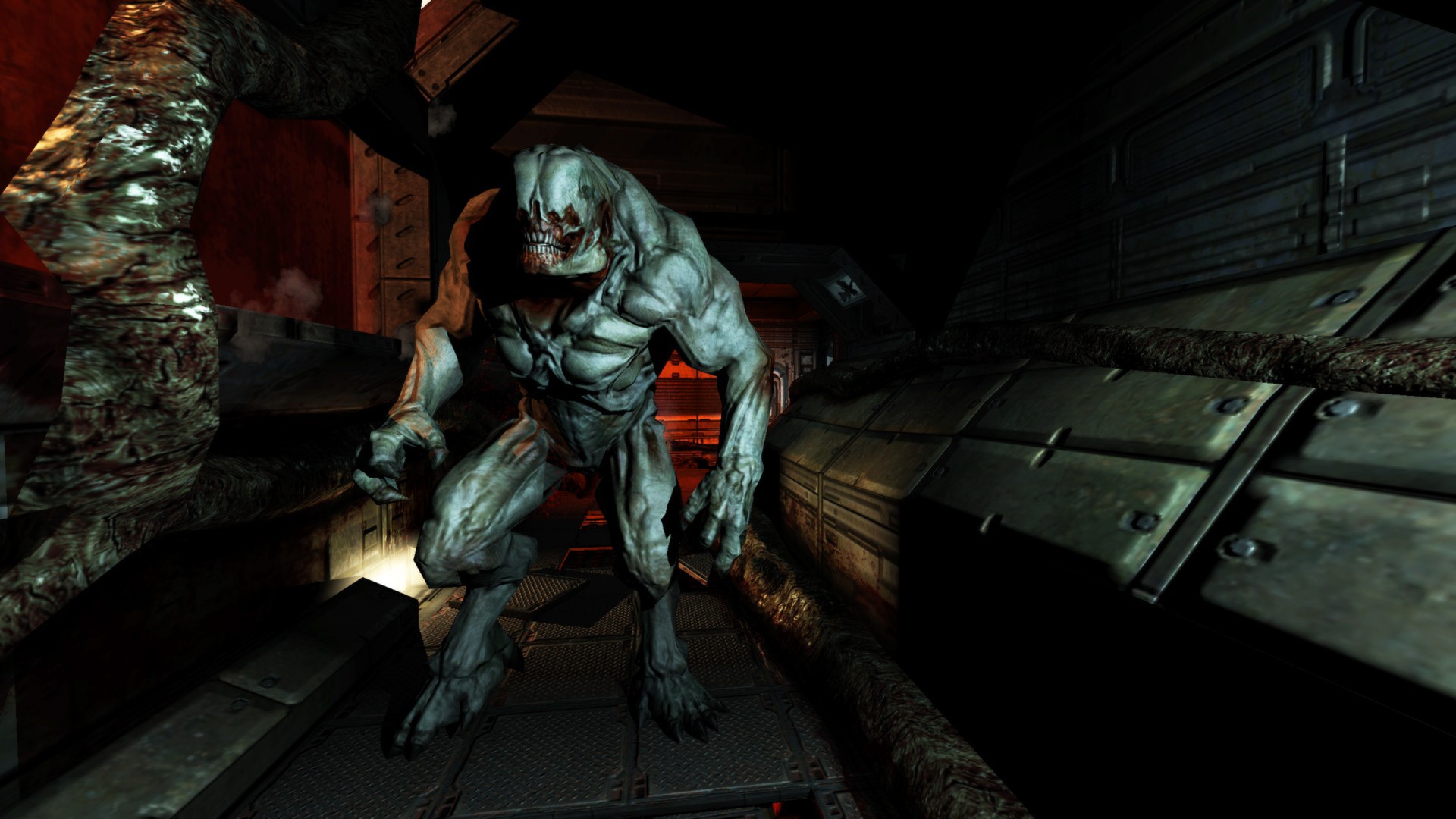
By the time Doom 3 entered development, id Software was a very different studio. The challenging development of Quake had seen the working relationship between Romero and Carmack break down, culminating in Romero's departure from the company just after Quake's launch. Romero would go on to found Ion Storm with Tom Hall, where they oversaw design of Daikatana and Anachronox.
Meanwhile, id Software knuckled down on two Quake sequels, the sci-fi , hardware accelerated Quake 2, and the exclusively multiplayer Quake 3. By 2003, id Software had grown to a core team of roughly 26 people. But the internal dynamic of the studio had also changed dramatically. While visiting the studio in 2003, prior to the publication of Masters of Doom, Kushner noted, "I've never seen id's office as focused as it is now."
While Carmack's influence is present in all id early games, Doom 3 is the one where his ideals shine through most clearly. It was Carmack who pushed to make a third Doom game after Quake 3, when the original plan was to design a multiplayer RPG called Quest. This led to Carmack issuing an ultimatum to the main proponents for Quest, Adrian Carmack and Kevin Cloud, threatening that he would leave the company unless they made Doom 3. "Obviously no fun for anyone involved," Carmack later wrote in a .plan file (a prototypical hybrid between a blog post and social media), "but the project direction was changed, new hires have been expedited, and the design work has begun." There's no record of Cloud or the other Carmack's views on the topic from the time, but in a G4 documentary on the making of Doom 3, Cloud acknowledges his original position as "wrong" and that "[Carmack's] decision was great".
Doom 3 is the one where the art and design revolves most heavily around the technology.
That same .plan file also outlines Carmack's reasoning for making Doom 3, namely "a general lack of excitement for the proposed plan, the warmth that [Return to Castle] Wolfenstein was met with at E3, and excitement about what we can do with the latest rendering technology". This last point also hints at Carmack's influence on the project. Of all the Doom games, Doom 3 is the one where the art and design revolves most heavily around the technology. Its unified lighting and shadowing system enabled most of the game's light sources to be computed in real-time. Combined with Carmack's homebrewed stencil-shadowing algorithm (known today as Carmack's Reverse) the result was a hugely advanced light and shadow system perfect for creating oppressive, moody environments.
Doom 3's design followed on from these techniques, taking the scarier elements of the original Doom and using them to build a full-blown survival horror experience, one built not around generating a sense of power, but a sense of fear. Speaking to Polygon in 2012, id Software CEO Todd Hollenshead explained how the game's combat was designed around your flashlight, which pierced through the gloom. "The purity of the game is that you could either have the flashlight, or have the gun, it was just a choice you had to make in the game. I think that, for the game we made at the time, it was the right decision."
Hell's light
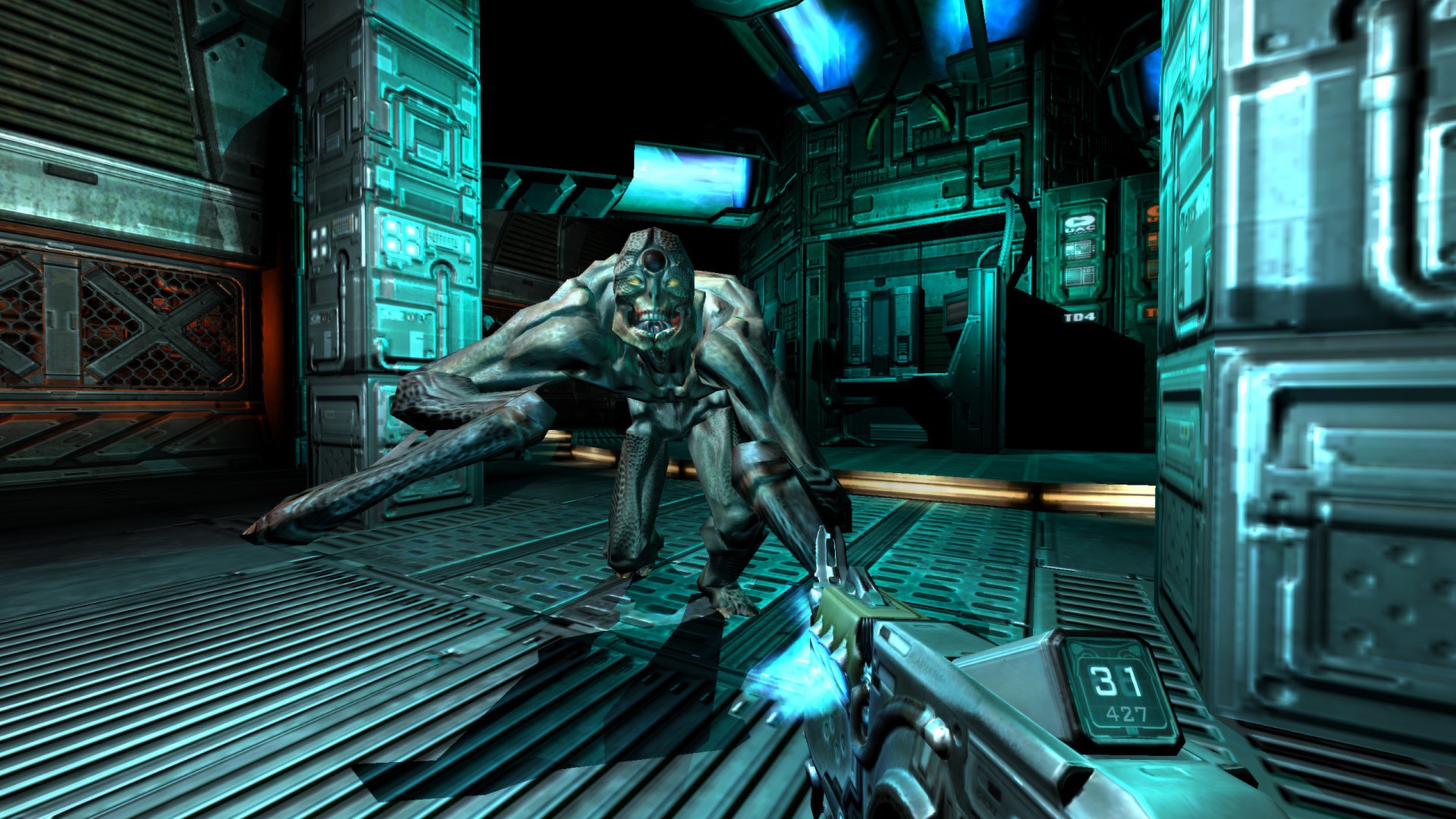
Judging by the game's initial reviews, it was the right decision. Ross Atherton awarded the game 90 in PC Gamer, while Will Porter gave it the same score in PC Zone. Yet even in these glowing reviews, there's an underlying tone of trepidation. "In 1994, we said of Doom 2 'It's Doom all over again, but with more of everything that made it great in the first place'. That's still true, but today it's a much a word of caution as of recommendation," Atherton writes. Porter, meanwhile, says, "To be honest, some people may not 'get' Doom 3 as I did—an awareness of the heritage of PC gaming and an element of fanboyism helps in its appreciation."
In more recent years, Doom 3's reputation has diminished, with a gradual acknowledgement that although its visuals may be atmospheric, its combat is flat and sluggish, and its environments cramped and constraining. Id Software itself backtracked on some of the game's ideas post-release, altering the flashlight for the game's BFG edition so players could switch it on while holding their gun.
Doom 3 may have been a technological marvel, but outside of that, in areas like storytelling and combat design, it is heavily influenced by what other games were doing at the time. FPS conventions had changed dramatically in the years surrounding Doom 3's development, with an emphasis on 'realistic' level design, scripted storytelling, and cinematic action. In his review, Atherton refers to it as "quite literally 21st century Doom", a point that retains its relevance. To reiterate Hollenshead, for the game id made at the time, it was the right decision. But in the years to come, this receptiveness to trends would cause more serious problems for the grandaddy of first-person shooters.
Doom 4
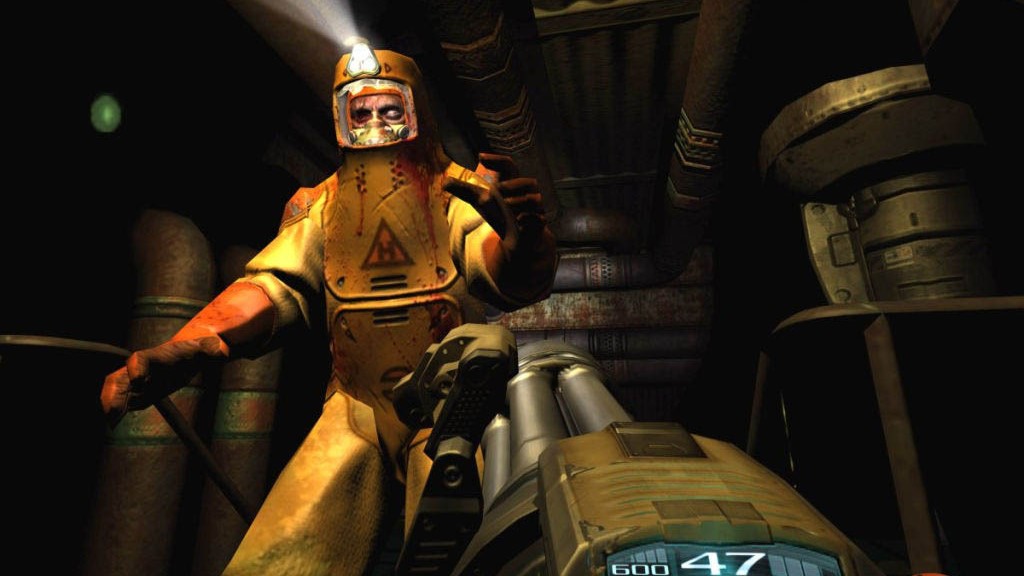
Id Software followed Doom 3 with the expansion pack Resurrection of Evil (which, in another concession to popular trends, featured a Half-Life 2-style gravity gun) before moving onto its next project, the post-apocalyptic shooter Rage. But this wasn't the only game id had in the pipeline. At QuakeCon 2007, John Carmack hinted that a new Doom game was in development, with Doom 4 being informally revealed the following year via a recruitment ad.
Snippets about the game trickled out across the next few years. Speaking to GameSpot in 2009, Hollenshead stated that Doom 4 was "very much deep in development", and that "everything I've seen on it is classic Doom". When asked how it related to Doom 3, Hollenshead's answer was unclear, "It's not a sequel to Doom 3, but it's not a reboot either. Doom 3 was sort of a reboot. It's a little bit different from those."
Yet no specific information about Doom 4 emerged until 2013. And when it did arrive, it wasn't good. A report by Jason Schreier for Kotaku stated that, for the past five years, id had been developing a "rework" of Doom 2, one so heavily inspired by Call of Duty that there were in-jokes referring to it as "Call of Doom". "In order to be a big shooter these days, you have to have some amount of the big, bombastic movie experience," one source stated, while another lamented that the "horror and shock elements" were "bookended by pointless shooting galleries".
The company was now owned by Bethesda, and Doom 4 had been scrapped.
Where Doom 3 was receptive to the ideas of shooters surrounding it, Doom 4 was, by all accounts, in thrall to them, sacrificing the fundamental DNA of Doom in favour of what was believed to be popular. This was confirmed by Tim Willits in an interview with IGN in 2013: "Every game has a spirit. When you played Rage, you got the spirit. And [Doom] did not have the spirit," he explained. "It didn't have the passion and soul of what an id game is. Everyone knows the feeling of Doom, but it's very hard to articulate."
By the end of 2013, id Software was a very different studio to the one that had made Doom 3. John Carmack left the studio in November that year. The company was now owned by Bethesda, and Doom 4 had been scrapped. Id had forgotten how to make Doom, and it would spend the next few years learning how to do it all over again.
Doom (2016)
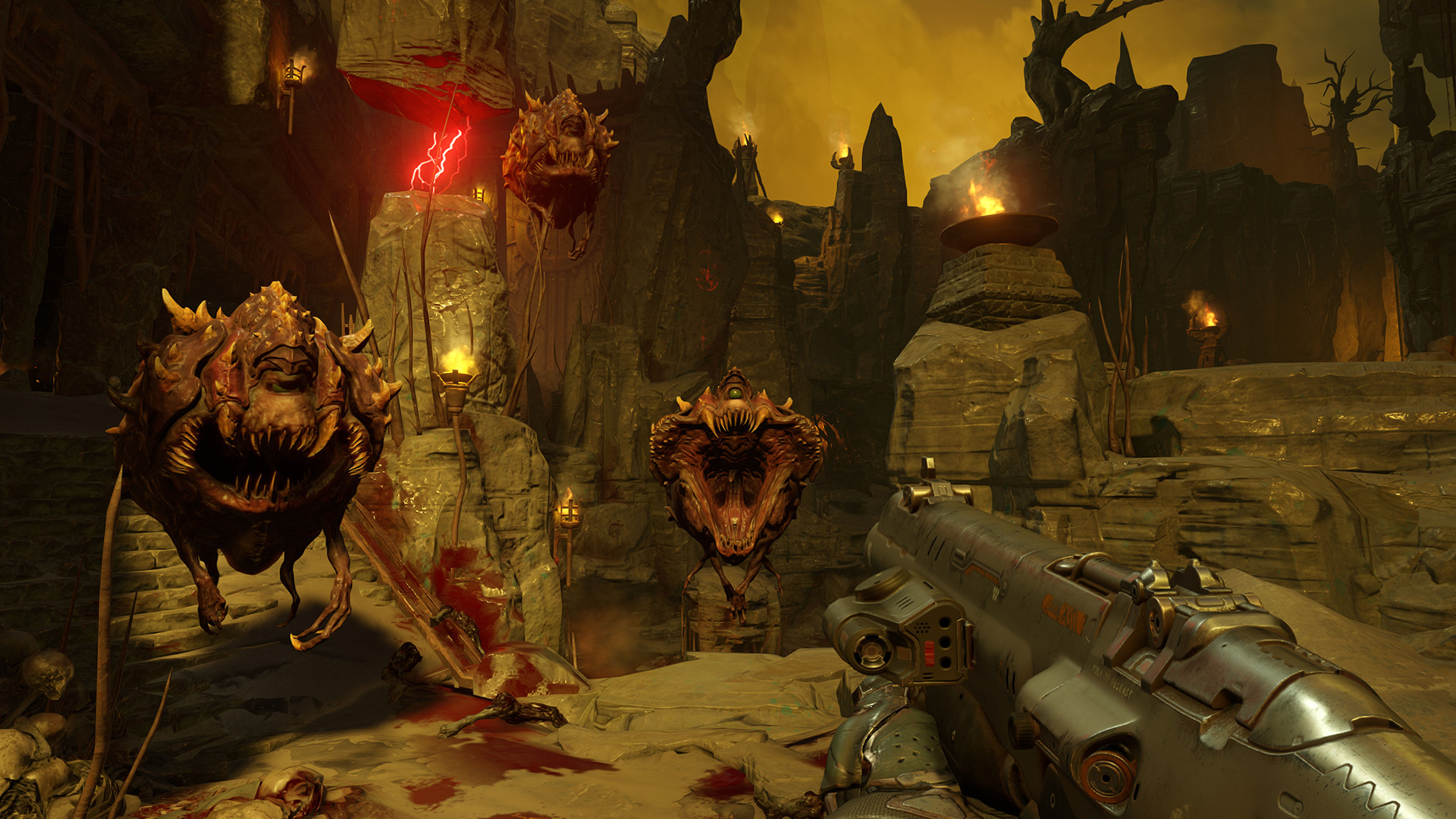
With hindsight, it seems obvious Doom 4 was destined to fail. But it's important to understand the context in which it was being made. By 2007, the linear, single-player FPS was already past its heyday. The massive success of Call of Duty 4 firmly established multiplayer as the primary concern for shooters henceforth, while the likes of Resident Evil 4, Gears of War and Uncharted had defined third-person games as the driving force of linear, singleplayer action. Even linearity itself was beginning to be challenged by vast open world RPGs like Oblivion, a factor id Software tried to capitalise upon early in the semi-open, vehicle-strewn wastelands of Rage.
With Doom 4, id Software was trying to rule a kingdom with shrinking borders. By 2013, that kingdom was pretty much gone. If your shooter wasn't online-oriented like CoD or open-world like Far Cry, it stood little chance.
This was the challenge that id Software faced. So what was the solution? It started with asking some fundamental questions. "What do we want to make and what do we think fans want to play?" said Marty Stratton in a 2016 interview with VentureBeat. "We got some groups of people together and did a lot of looking back at the original Doom and Doom 2, as well as Doom 3. We took a holistic approach to the question of what, fundamentally, is the DNA of Doom. Then we started to build around that."
Where Doom 3's development had revolved around new technology, the Doom reboot's development was driven by game design. At the heart of this was the reboot's glory kill system, through which players could perform grisly melee executions of demons to gain additional health, helping them barrel through combat encounters rather than hiding behind cover. According to Stratton, this system gestated early in development due to id reflecting upon Doom's DNA. "Our animation team at the time had put together a pretty cool demo," he explained to VentureBeat. "It was basically an animatic. It was all animation based, using creatures and guns from the previous version. It was really the genesis of the glory kill system, as well as the inspiration for some of the push-forward combat."
Rip and tear you go
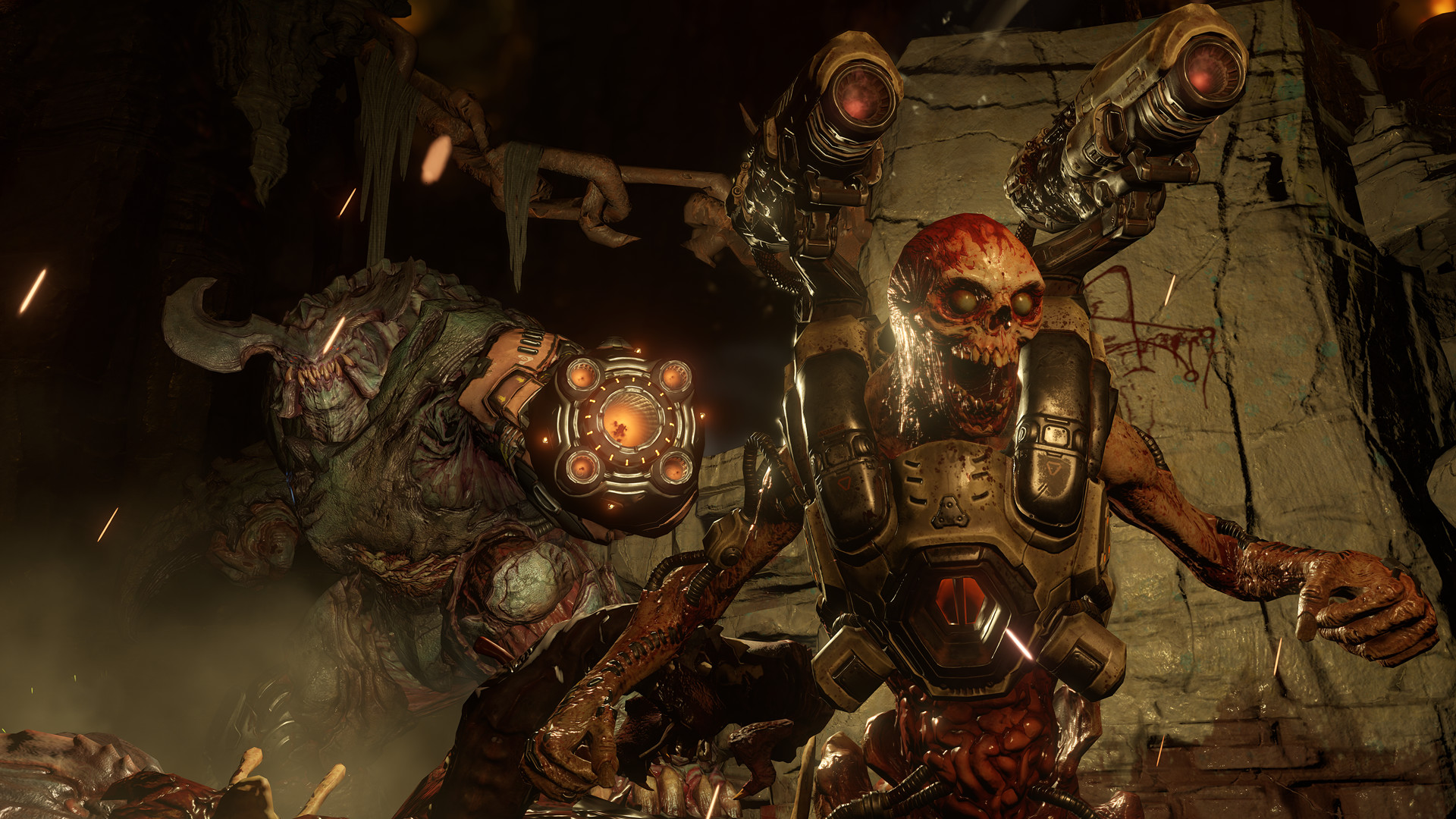
As early as mid-2013, id Software had a playable core to Doom that Stratton says was "as solid as anything we'd done prior to that" aggressive, propulsive and, above all, fun. All the other creative decisions emanated from that core. The level design, for example, should take inspiration from multiplayer arenas, facilitating the players fast movement abilities. The art should be bright and vivid, like a comic book or heavy metal album, to complement your character hyperreal combat capabilities. Even the game's technological focus was influenced by the core design philosophy, with id's engine devs prioritising performance for id-tech 6 and targeting the best-looking experience at a consistent 60fps.
Id decided the story should never take precedence over the action.
Perhaps most importantly of all, id decided the story should never take precedence over the action, echoing John Carmack's design thoughts for the original Doom. Stratton cites a moment early in the game designed very much to set the tone. "That first thing, where Samuel [Hayden] tries to talk to you and you throw the monitor away, that was very much, 'I'm here to kill demons'."
The end result was a renewed vision for the linear, singleplayer FPS, the polar opposite of id Software's plans for Doom 4, and something largely out of step with popular FPS conventions of the time. It was also excellent. "With Doom's campaign, id Software found a sweet spot nestled somewhere between nostalgia and modernity that celebrates the pulpy sheen of big-budget shooters and resurrects an intense, simplified focus on the shooting itself," wrote James Davenport in PC Gamer's Doom 2016 review, awarding it a score of 88. That might be a little lower than the 90 of Doom 3 and the 94 of Doom 2, but it's worth noting that not everything in Doom's reboot worked. If you forgot that Doom 2016 shipped with a multiplayer mode, for example, that wouldn't be surprising given how flat and lacking in personality it was. The game also featured a 'Snapmap' level editor that was interesting in theory, but too constrained in its toolset to facilitate a mapping community.
Crucially, though, the important part of Doom's reboot, the singleplayer campaign, worked. Moreover, it proved that linear, singleplayer shooters could still be innovative and successful at the highest levels of development.
Doom Eternal
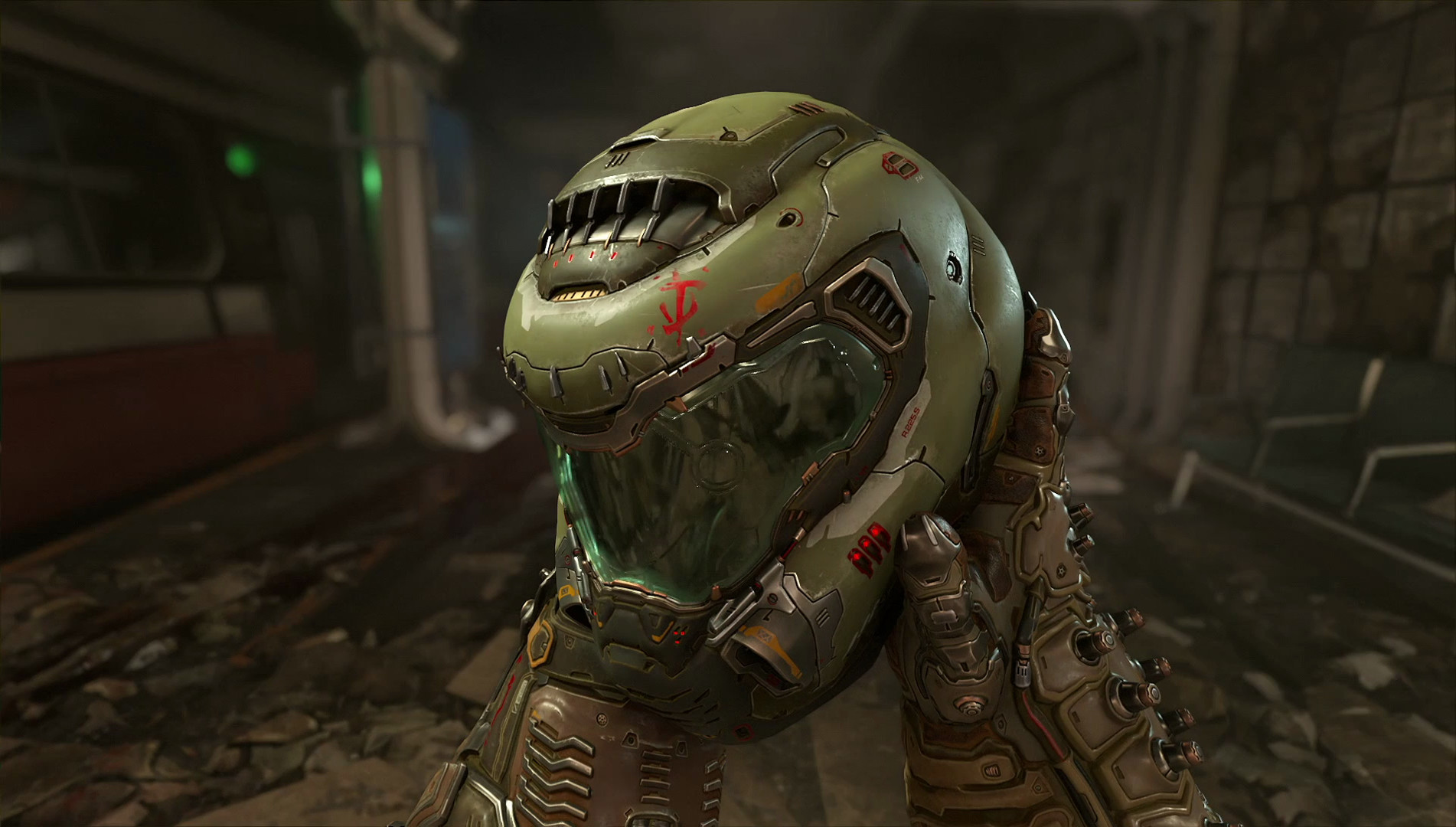
Building a game that genuinely lives up to Doom's monstrous reputation is no mean feat, and you'd think that id Software would be satisfied with what it pulled off in 2016's reboot. But the studio believed it could do better. "As fun as the last Doom was, there was a monotony to it," said Marty Stratton to PC Gamer in 2019. "In the later levels especially it felt like corridor, arena, corridor, arena."
For the sequel, Doom Eternal, id Software wanted to blow the doors off. "From the very start to the final boss, players will be seeing things they'd never expect from a Doom game." At the heart of this was, again, the glory kill system. But id Software would take the idea of exploiting enemies to your advantage and massively expand it. Now, you'd be able to burn enemies with a shoulder-mounted flamethrower, causing them to drop armour when shot. Each demon would also have specific vulnerabilities to certain weapons, enabling you to take them out quicker and letting id pile on greater pressure. In short, no longer would you be killing mindlessly, your attacks would be precise and devastating.
Eternal applied this expansive approach to the rest of the game too. It would greatly increase the number of locations players visited, adding Earth and the celestial realm of Sentinel to the Martian moonbases and infernal hellscapes of the original. It would also make those spaces more intricate, giving the Doom Slayer more ways to traverse them, requiring players to "think [their] way through the level design" as described by Stratton. It would double the number of demons in the game, lend context to the Doom Slayer's origins through a more involved story. It would even feature a Dark Souls-style invasion mode.
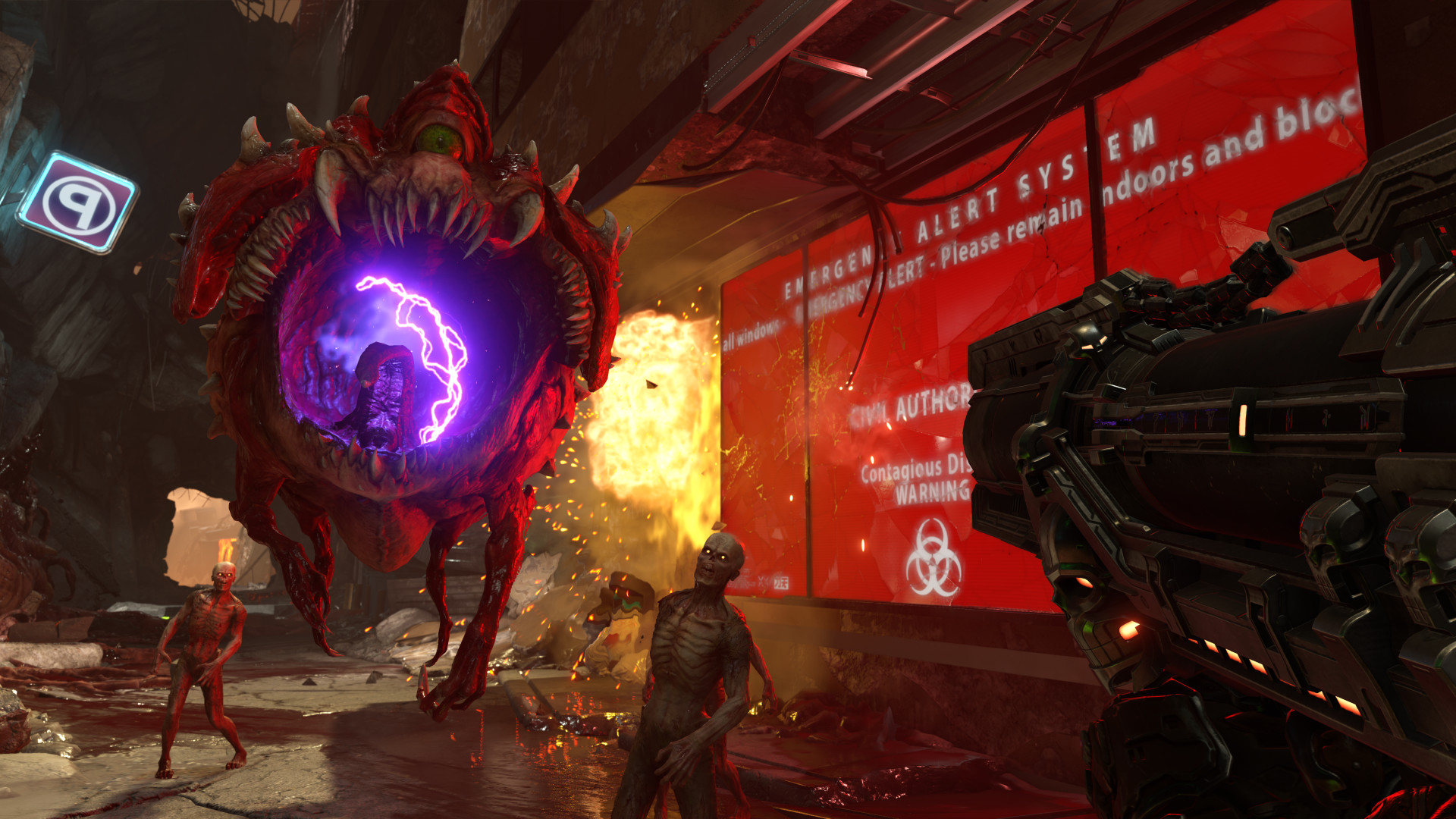
As a sequel, Eternal intended a far more extensive overhaul than Doom 2 did over the 1993 original. But with adding all this stuff came a risk, namely losing sight of the gleeful simplicity at the heart of the series. Does Doom need a more involved story, or platforming sequences? Id Software was confident it could get the tone right. "As long as the solution to every problem involves the player being aggressive somehow, it feels like Doom," Stratton said to PC Gamer.
When Eternal arrived in 2020, the initial response was ecstatic. "Doom Eternal is a celebration of excess. Excess in sin, in violence, scale, speed and volume. I've never played a shooter this intense and demanding," said James Davenport in his PC Gamer review, awarding the game a score of 94. In the wake of release, however, criticisms of the game began to grow. That the added story elements bogged the game down. That the platforming elements were unnecessary and annoying. Perhaps the most significant was that the combat was too restrictive, with particular focus on the Marauder, an enemy that required players to respond to their attacks in a specific pattern.
Unlike the 2016 reboot, Eternal is a game that takes time to master.
Id Software was bullish in the face of such criticism, with Eternal creative director Hugo Martin insisting that the Marauder was "crystallising everything about the game". Nonetheless, there is a sense that Eternal experienced a more problematic development to 2016's Doom. The hotly touted invasion-based multiplayer was not available on release and was ultimately cancelled, with id Software blaming "the unforeseen consequences of the pandemic and remote working" for its absence, and instead focusing on a singleplayer horde mode. Meanwhile, Eternal's composer Mick Gordon described Eternal as a "difficult project", stating that he and the entire Eternal team experienced brutal crunch, and accusing Stratton of poor management, accusations that Stratton rejects.
Yet while Eternal may have endured a rougher critical and developmental ride that its predecessor. Today, the consensus is that it is probably the best single-player FPS around. Unlike the 2016 reboot, Eternal is a game that takes time to master. But once you have mastered it, it offers a level of thrill and intensity unlike any other single-player shooter. The two expansions that followed Eternal pushed those ideas to the limit, demonstrating the full potential of the Doom Slayer's combat abilities.
Looking back across the last three decades, what's most remarkable about Doom's history is not simply that the series remains relevant, but that it remains relevant at both ends of the timeline. The games currently being made by id are at the cutting edge of FPS design, finding new ways to distil a formula first concocted 30 years ago. Meanwhile, the original games made by Romero and Carmack are omnipresent. They still play superbly, and form the basis for a modding community that is still coming up with fresh, exciting ideas. In both its old form and the new, Doom is, indeed, eternal.
Rick has been fascinated by PC gaming since he was seven years old, when he used to sneak into his dad's home office for covert sessions of Doom. He grew up on a diet of similarly unsuitable games, with favourites including Quake, Thief, Half-Life and Deus Ex. Between 2013 and 2022, Rick was games editor of Custom PC magazine and associated website bit-tech.net. But he's always kept one foot in freelance games journalism, writing for publications like Edge, Eurogamer, the Guardian and, naturally, PC Gamer. While he'll play anything that can be controlled with a keyboard and mouse, he has a particular passion for first-person shooters and immersive sims.

